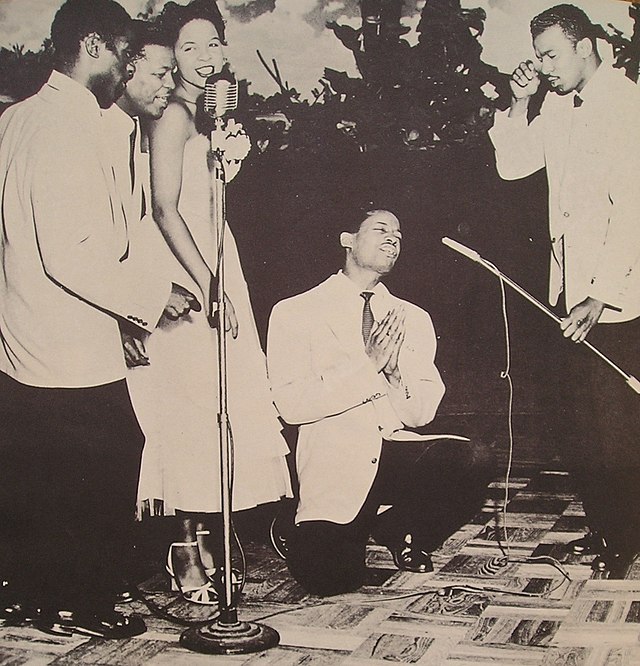
Learning Objectives
At the end of this lesson, students will be able to do the following:
- Describe the social and cultural context that led to the development of rhythm and blues.
- Explain the role of independent record labels in recording and disseminating rhythm and blues.
- Identify and define the four general categories of music marketed as rhythm and blues.
- Name specific women and men and identify their contributions to the genre of rhythm and blues.
- Discuss the influence of rhythm and blues on rock and roll.
Introduction to Lesson 19
Rhythm and blues is an umbrella term that describes a "variety" of African American popular music, urban-based forms that appeared during World War II and the immediate post-war years. It derived from jazz with its instrumentation (rhythm section and brass and woodwind instruments) and swing rhythm, blues, boogie-woogie, and gospel and was inextricably tied to demographic shifts during World War II as hundreds of thousands of African Americans moved from the country to the city.
General Characteristics
While the heading rhythm and blues encompass a variety of sub-genres, most of these utilized musical and lyrical practices at least partially based on the twelve-bar blues form/progression. These sub-genres were oriented towards social dancing at either fast or slow tempos and featured a rhythm section consisting of drums, acoustic/upright bass, piano, or guitar. The guitar was invariably electric and, along with the piano, a tenor saxophone was typically used for instrumental solos as well as responses to the lead singer’s call. Lead vocalists tended to perform in one of three styles:
- A singing-speaking style heard in "Chicken Shack Boogie" (1948) by Amos Milburn
- A gospel-influenced style involving substantial use of melismaA group of many notes (usually at least five or six) sung melodically to a single syllable. and timbre variation, such as full-throated shouts and guttural sounds as heard in the recording "Hound Dog" (1953) by Willie Mae "Big Mama" Thornton
- A dramatic falsetto timbre typically sung by tenor voices as part of doo-wop groups, such as in the song "Only You (And You Alone)" (1955) by The Platters
Sweet Lorraine
Just found joy
I'm as happy as a baby boy,
baby boy
With another brand new
choo-choo choy
When I met my sweet Lorraine, Lorraine, Lorraine
Sh-Boom
Oh, life could be a dream
(Sh-boom)
If I could take you up in paradise up above
(Sh-boom)
If you would tell me I'm the only one that you love
Life could be a dream, sweetheart
